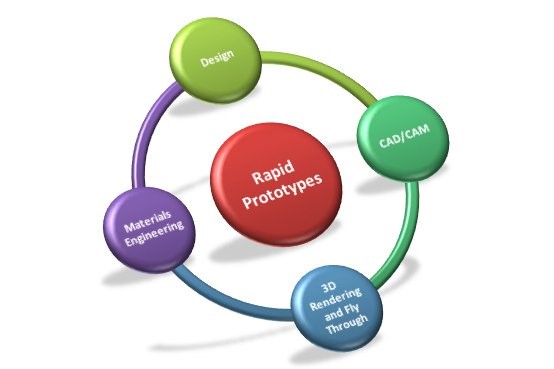
There is new added substance producing methods being built up constantly. Some are best for shopper applications and others for mechanical environments, yet not every one of them are appropriate for quick prototyping. Let's explore the main 4 techniques for 3D rapid prototyping and their qualities and shortcomings with the goal that you can choose what may be best for your next undertaking.
Main Techniques For 3D Rapid
Prototypes are-
1. Stereolithography (SLA):
Stereolithography was the principal fruitful commercial 3D printing strategy. A shower of photosensitive fluid is set and each layer in turn utilizing an UV light constrained by a PC. These layers are gotten from two-dimensional cross segments of the 3D CAD model and controlled with a product record design called .stl. This is vital in light of the fact that, being the first, .stl has become the default code utilized by most present-day 3D printers, paying little mind to the printing innovation employed.
Stereolithography is
best for models and to make ace examples for vacuum
casting.
SLA is quick and inexpensive and the completed item is solid with a decent
surface completion. Supports might be required relying upon the machine.
2. Selective Laser Sintering (SLS):
This is a type of powder bed combination. Parts are shaped on a build plate one
layer thus, using a laser to sinter the powder media. Since the assistance is circled on all sides be basically the powder medium, it is supporting and additional structures are not required. SLS can work for plastic or the metal prototype. In the same way as other 3D printing forms, the extraordinary bit of leeway here is that parts can be made with complex geometries like interior grid structures that would be troublesome or difficult to do some other way.
Notwithstanding, the
surface completion is normally rough and may require optional work to finish it,
particularly if it's utilized as an ace example for later casting. The quality
is likewise not in the same class as SLA printed parts.
3. Fused Deposition Modeling (FDM):
This is the sort of 3D plastic printing regularly found in work area machines in a home or little shop. It utilizes a spool of plastic fiber that is dissolved inside the barrel of a printing spout. This hot fluid tar is then set down layer-by-layer, again constrained by a .stl cutting project.
FDM printing is modest,
simple to-utilize, and can accommodate various sorts and shades of plastic
joined in a solitary form. t's also shielded enough that even children can use
it in a study hall. FDM printed parts have poor resolution and finish quality
contrasted with mechanical procedures, and the parts are not extremely solid.
Anyway, it very well may be perfect for making rapid
prototypes and models during the development stage.
4. Selective Laser Melting (SLM):
Another type of powder bed combination, SLM is a modern procedure that requires painstakingly controlled conditions. Fine metal powder of a uniform size and shape is totally welded onto a structure plate using an incredible laser inside a fixed chamber. Normal metal powders may incorporate titanium, hardened steel, maraging steel and cobalt chrome.
SLM is the favored strategy for making modern pieces of the most elevated quality, strength and intricacy. The procedure can be costly and must be constrained by a gifted specialist (professional), yet the outcomes are perfect for the most demanding applications in aviation, car, guard and clinical parts.
Every one of these 3D printing methods has trade-offs as far as speed, cost, quality and accessible materials. Want to know more? Get in touch with us today!
















